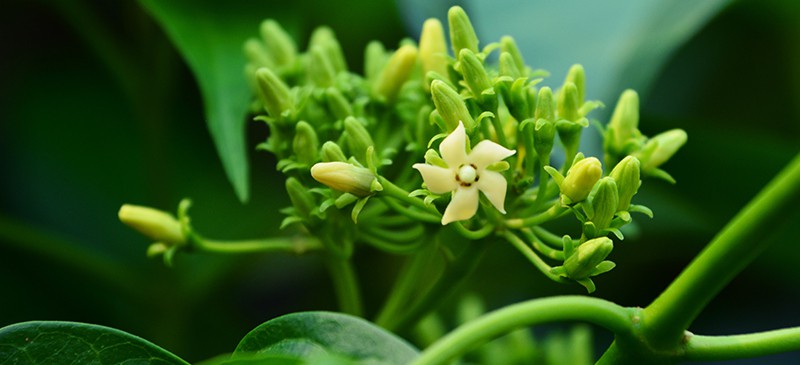This Dr. Axe content is medically reviewed or fact checked to ensure factually accurate information.
With strict editorial sourcing guidelines, we only link to academic research institutions, reputable media sites and, when research is available, medically peer-reviewed studies. Note that the numbers in parentheses (1, 2, etc.) are clickable links to these studies.
The information in our articles is NOT intended to replace a one-on-one relationship with a qualified health care professional and is not intended as medical advice.
This article is based on scientific evidence, written by experts and fact checked by our trained editorial staff. Note that the numbers in parentheses (1, 2, etc.) are clickable links to medically peer-reviewed studies.
Our team includes licensed nutritionists and dietitians, certified health education specialists, as well as certified strength and conditioning specialists, personal trainers and corrective exercise specialists. Our team aims to be not only thorough with its research, but also objective and unbiased.
The information in our articles is NOT intended to replace a one-on-one relationship with a qualified health care professional and is not intended as medical advice.
Gymnema Sylvestre: An Ayurvedic Herb That Helps Fight Diabetes, Obesity & More
March 27, 2020

Gymnema sylvestre is a rare herb that has a deep roots in history for its medicinal uses in Ayurvedic medicine.
It’s been used to treat a range of conditions and ailments, but it’s most recognized for its efficacy in helping fight diabetes naturally. In fact, in the Ayurvedic system, it’s considered one of the major plants to regulate blood sugar and insulin levels.
Today, this powerful herb is also used to address some major health issues, including obesity, heart disease and arthritis. It’s being recognized as a therapeutic remedy for conditions that affect millions of people across the globe.
What Is Gymnema Sylvestre?
Gymnema sylvestre is a perennial, woody climber that has a long history of medicinal use in Ayurvedic medicine. It belongs to the class dicotyledonous of the family Asclepiadaceae or “milkweed” family.
You can find gymnema slyvestre growing in tropical and subtropical regions, especially parts of central and southern India, tropical African, and some parts of China, Malaysia and Sri Lanka.
The many benefits of gymnema sylvestre come from the herb’s phytoconstituents, which includes:
- gymnemic acids
- gymnemasaponins
- anthraquinones
- flavones
- phytin
- resins
- tartaric acid
- formic acid
- butyric acid
- lupeol
- stigmasterol
- calcium oxalate
In Ayurvedic medicine, G. sylvestre is considered a digestive, anti-inflammatory, bitter, acrid and liver tonic.
Related: Gynostemma Benefits (+ How to Use Jiaogulan)
Other Names
Today, gymnema sylvestre is cultivated worldwide, and it’s known by mane names. It’s commonly referred to as its Hindi name “gurmar,” which means “destroyer of sugar.”
Depending on the region, the herb goes by many other names, including:
- Gemnema melicida
- Gimnema
- Gurmarbooti
- Gymnema montanum
- Gymnema
- Madhunashini
- Merasingi
- Meshashringi
- Periploca sylvestris
- Shardunika
- Vishani
- Kavali
- Australian cowplant
- Dhuleti
Health Benefits
Gumar has been used for thousands of years because of its long list of therapeutic compounds. In traditional medicine, this rare herb has been recommended for a range of health conditions, making it a powerful natural remedy.
Research suggests that gumar benefits are as follows:
1. Helps Fight Diabetes
Studies have confirmed that gurmar possesses remarkable hypoglycemic effects and, according to researchers, “forms the platform of diabetes therapeutics in the traditional system of medication.”
The antidiabetic effects of G. sylvestre help maintain normal blood sugar levels, especially after meals. This is exactly why this rare herb is known as the “destroyer of sugar” in Hindi.
Studies indicate that gurmar is also able to stimulate insulin production in the pancreas, which also helps lower blood sugar levels.
2. Aids Weight Loss
Gymnema sylvestra for obesity is getting plenty of attention because of the herb’s ability to decrease body weight, inhibit glucose absorption and reduce sugar cravings, as shown by research conducted in India.
Components of gurmar are able to prevent the accumulation of triglycerides in muscle and the liver and decrease fatty acid accumulation in the body. Because the herb plays a role in carbohydrate and lipid metabolism, it may help support weight loss and fight obesity.
Plus, if you need help kicking a sugar addiction, gumar may be able to reduce those cravings.
3. Improves Cholesterol Levels
Gymnema has been proved to impact fat absorption and cholesterol levels. This rare herb may be able to help lower LDL cholesterol and triglycerides, making it a powerful tool for fighting heart disease.
In a 2014 study published in Diabetes, Obesity & Metabolism, participants who were given a combination of hydroxycitric acid, niacin-bound chromium and gymnema sylvestre experienced decreased body weight and body mass index by 5 percent to 6 percent and significantly lower food intake, total cholesterol, low-density lipoproteins, triglycerides and serum leptin levels.
4. Improves Arthritis Symptoms
The tannins and saponins in gurmar are responsible for the herb’s anti-inflammatory effects. These therapeutic compounds allow gymnema to fight inflammatory conditions like arthritis.
Researchers suggest that G. sylvestre may reduce the release of inflammatory mediators, which helps reduce bone destruction and arthritis symptoms. In mice, gymnema extracts were able to reduce paw swelling by 39 percent to 75 percent.
5. Fights Cavities
G. sylvestre has antibacterial effects and has been shown to fight microbial dental infections. For this reason, herbal toothpastes made with powdered gurmar have become available.
6. Regulates Immune System
Gymnema has displayed immunomodulating activity in studies on mice. The herb is actually able to suppress immune responses, which can reduce swelling and other inflammatory factors.
In addition to these studied benefits, there is some research indicating that gymnema benefits also include its ability to:
- promote wound healing
- treat snake bites
- act as a laxative
- work as a natural diuretic
- ease cough
Dosage
G. sylvestre is used in a number of dietary and health supplements, with forms including tablets, teas and beverages, energy supplements, and food products that are meant to regulate body weight.
A general recommended gymnema sylvestre dosage is a 100-milligram capsule, taken up to four times daily. It’s best to start with one capsule and gradually increase your dose, paying attention to any adverse effects.
If you are unsure how to use gymnema for conditions like diabetes, obesity and high cholesterol, speak to your doctor or health care professional.
For reducing blood sugar levels, studies show that consuming 200–400 milligrams of gymnemic acid may have antidiabetic effects.
For gymnema sylvestre extract or powder, follow the directions on the package. You can add the powder or extract to any liquid.
For taste, some brands recommend adding cinnamon or a natural sweetener.
Drinking gymnema sylvestre tea is an easy way to take advantage of the herb’s many benefits. You can purchase gumar tea in your local health food store or online.
You can also make your own gymnema tea by boiling the leaves and letting them steep for 10–15 minutes.
Risks and Side Effects
Research indicates that high doses can lead to gymnema sylvestre side effects, such as:
- hypoglycemia
- weakness
- shakiness
- excessive sweating
- muscular dystrophy
These gymnema sylvestre dangers may occur when a person takes too much over a long period of time. For this reason, it’s recommended that you check in with your doctor after taking this herb for a 20-month period.
Gumar is commonly used as a natural approach to reducing high blood sugar levels, but it should not be taken in combination with blood-sugar-lowering medications unless advised by your doctor.
Women who are pregnant or breastfeeding should not use gymnema without consent from their health care professionals. There’s not enough evidence to suggest the herb’s safety in these circumstances.
Conclusion
- Gymnema sylvestre is a climbing shrub that’s been used in Ayurvedic medicine for thousands of years.
- It’s most widely known for its ability to reduce blood sugar levels, fight obesity and lower LDL cholesterol.
- You can find gymnema tea, extract, capsules and powder in most health food stores or online. It’s best to start with smaller amounts at a time, and if you are using the herb to fight a health condition, do so under the care of your doctor.










